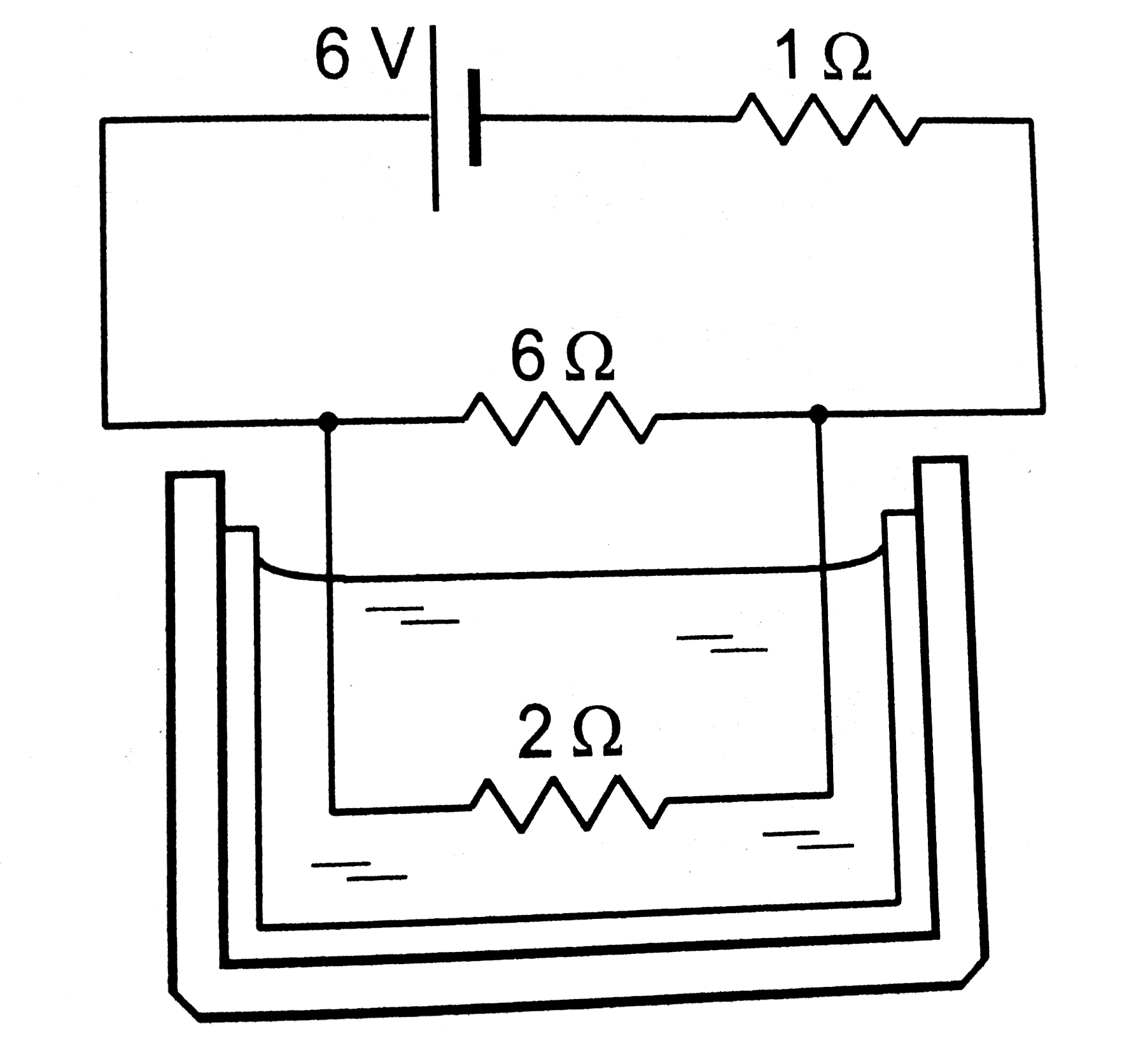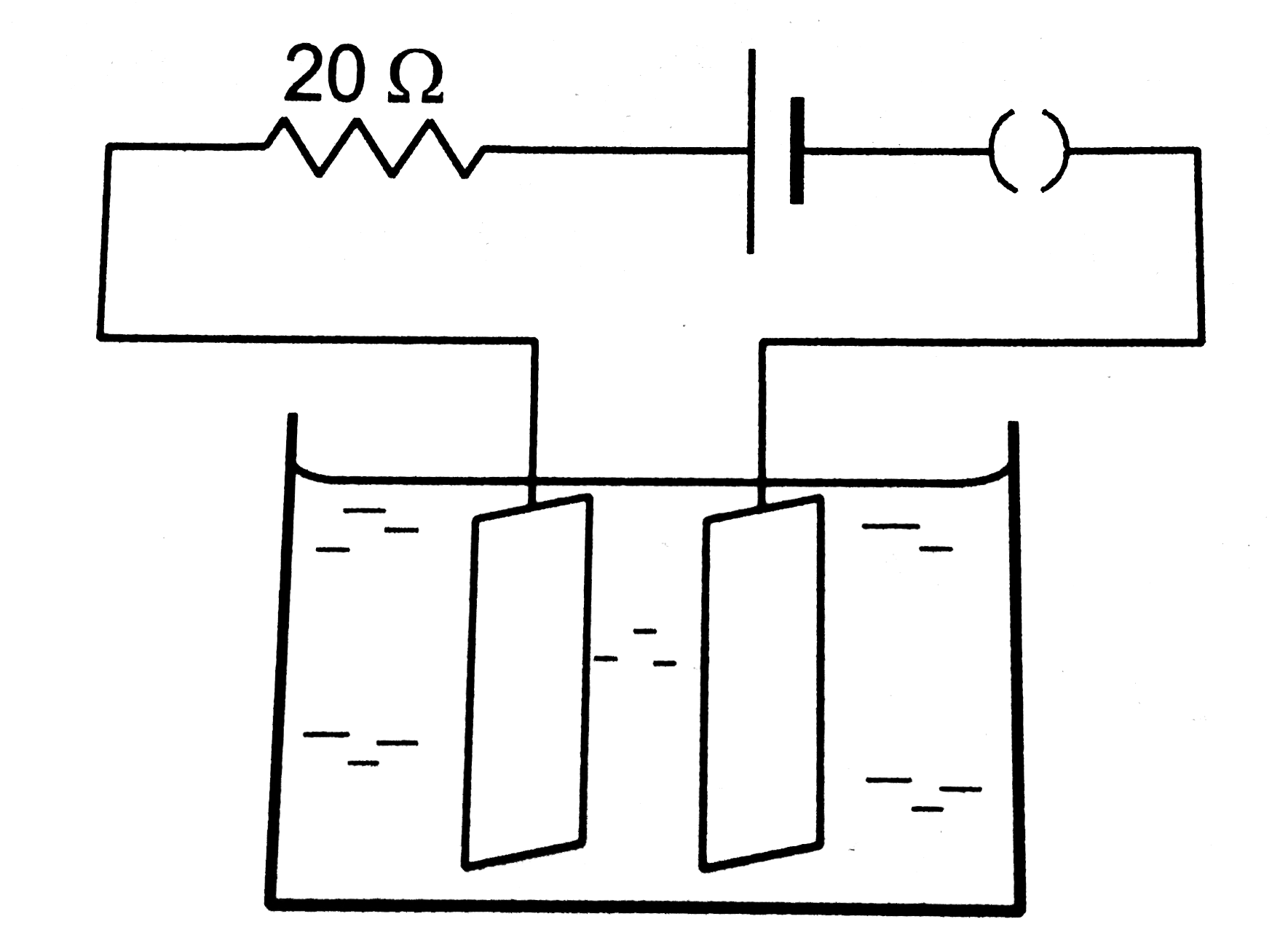Complete Solutions to Exercise of chapter THERMAL AND CHEMICAL EFFECT OF ELECTRIC CURRENT of Class 12 book with complete answers and questions
| Class 12 | PHYSICS |
| Chapter | THERMAL AND CHEMICAL EFFECT OF ELECTRIC CURRENT |
| HC VERMA | Exercise |
| Number Of Questions | 24 |
| Academic Year | 2023-24 |
An electric current of `2.0` A passes through a wire of resistance `25 Omega`. How much heat will be developed in 1 minute?
View SolutionA coil of resistance `100 Omega` is connected across a battery of `emf 6.0 V`. Assume that the heat developed in the coil is used to raise its temperature. If the heat capacity of the coil is `4.0 J K^(-1)`, how long will it take to raise the temperature of the coil by `15^@ C`?
View SolutionThe specification on a heater coil is `250 V, 500 W`. Calculate the resistance of the coil. What will be the resistance of a coil of `1000W` to operate at the same voltage?
View SolutionA heater coil is to be constructed with a nichrome wire `(rho = 1.0 xx 10^(-6) Omegam)` which can operate at `500 W` when connected to a `250 V` supply. (a) What would be the resistance of the coil? (b) If the cross-sectional area of the wire is `0.5 mm^2`, what length of the wire will be needed? (c) If the radius of each turn is `4.0 mm`, how many turns will be there in the coil?
View SolutionA bulb with rating `250V, 100W` is connected to a power supply of `220 V` situatd `10 m` away using a copper wire of area of cross section `5 mm^2`. How much power will be consumed by the connecting wire? Resistivity of copper `= 1.7 xx 10^(-8) Omegam`.
View SolutionAn electric bulb, when connected across a power supply of `220V`, consumes a power of `60 W`. If the supply drops supply is suddently increased to `240 V`, what will be the power consumed?
View SolutionA servo voltage stabiliser restricts the voltage output to `220 V +- 1%`. If an electric bulb rated at `220 V, 100 W` is connected to it, what will be the minimum and maximum power consumed by it?
View SolutionAn electric bulb marked `220 V, 100 W` will get fused if it is made to consume `150 W` or more. What voltage fluctuation will the bulb withstand?
View SolutionAn immersion heater rated `1000 W, 220 V` is used to heat `0.01 m^3` of water. Assuming that the power is supplied at `220 V and 60%` of the power supplied is used to heat the water, how long will it take to increase the temperature of the water from `15^@ C` to `40^@ C` ?
View SolutionAn electric kettle used to prepare tea, takes 2 minutes to boil 4 cups of water (1 cup contains 200 cc of water) if the room temperature is `25^@ C`, (a) If the cost of power consumption is `Re 1.00` per unit `(1 unit = 1000 watt-hour)`, calculate the cost of boiling 4 cups of water. (b) What will be the correspoinding cost if the room temprature drops to `5^@ C`?
View SolutionThe coil of an electric bulb takes 40 watts to start glowing. If more than 40 W is supplied, 60% of the extra power is converted into light and the remaining int heat. The bulb consumes 100 W at 220 V. Find the percentage drop in the light intensity at a point if the supply voltage changes from `220 V to 200 V`.
View SolutionThe `2.0 Omega` resistor show in figure is dipped into a calorimeter containing water. The heat capacity of the calorimeter together with water is `2000 J K^(-1)`. (a) If the circuit is active for 15 minutes, what would be the rise in the temperature of the water? (b) Suppose the `6.0 Omega` resistor gets burnt. What would be the rise in the temperature of the water in the next 15 minutes? (Figure)

View SolutionThe temperatures of the junctions of a bismuth-silver thermocouple are maintained at `0^@ C` and `0.001^@ C`. Find the thermo-emf (Seebeck emf) developed. For bismuth-silver, `a = - 46 xx 10^(-6) V^@ C^(-1) and b= -0.48 xx 10^(-6) V^@ V^@ C^(-2)`.
View SolutionFind the thermo-emf developed in a copper-silver thermocopule when the junctions are kept at `0^@ C` and `40^@ C`. Use the data in table.
View SolutionFind the neutral temperatuer and inversion temperature of copper-iron thermocouple if the reference junction is kept at `0^@ C`. Use the dat in table.
View SolutionFind the charge required to flow through an electrolyte to liberate one atom of (a) a monovalent material and (b) a divalent material.
View SolutionFind the amount of silver liberated at cathode if `0.500 A` of current is passed through `AgNO_3` electrolyte for 1 hour. Atomic weight of silver s `107.9 g mol^(-1)`
View SolutionAn electroplating unit plates `3.0 g` of silver on a brass plate in `3.0` minutes. Find the current used by the unit. The electrochemical equivalent of silver is `1.12 xx 10^(-6) kg C^(-1)`.
View SolutionFind the time requried to liberate 1.0 litre of hydrogen at STP in an electrolytic cell by a current of `5.0 A`.
View SolutionTwo voltameters, one having a solution of silver salt and the other of a trivalent-metal salt, are connected in series and a current of `2 A` is maintained for `1.50 hours`. It is found that `1.00 g` of the trivalent metal is deposited. (a) What is the atomic weight of the trivalent metal? (b) How much silver is deposited during this period?
Atomic weight of silver is `109.9 g mol^(-1)`
View SolutionA brass plate having surface area `200 cm^2` on one side is electroplated with `0.10 mm` thick silver layers on both sides using a `15 A` current. Find the time taken to do the job. The specific gravity of silver is `10.5 ` and its atomic weight is `107.9 g mol^(-1)`
View SolutionFigure, shows an electrolyte of `AgCI` through which a current is passed. It is observed that `2.68g` of silver is deposited in 10 minutes on the cathode. Find the heat developed in the `20 Omega` resistor during this period. Atomic weight of silver is `107.9 g mol^(-1)`. (Figure)

View SolutionThe potential difference across the terminals of a battery of `emf 12 V` and internal resistance `2 Omega` drops to `10 V` when it is connected to a silver voltameter. Find the silver deposited at the cathode in half an hour. Atomic weight of silver is `107.9 g mol^(-1)`.
View SolutionA plate of area `10 cm^2` is to be electroplated with copper `(density 9000 kg m^(-3)` to a thickness of 10 micrometres on both sides, using a cell of `12 V`. Calculate the energy spend by the cell in the process of deposition. If this energy is used to heat `100 g` of water, calculate the rise in the temperature of the water. ECE of copper `= 3 xx 10^(-7) kg C^(-1)` and specific heat capacity of water `= 4200 J kg^(-1) K^(-1)`.
View Solution
Exercise questions and complete solutions for chapter THERMAL AND CHEMICAL EFFECT OF ELECTRIC CURRENT of HC VERMA PHYSICS (ENGLISH) of Class 12